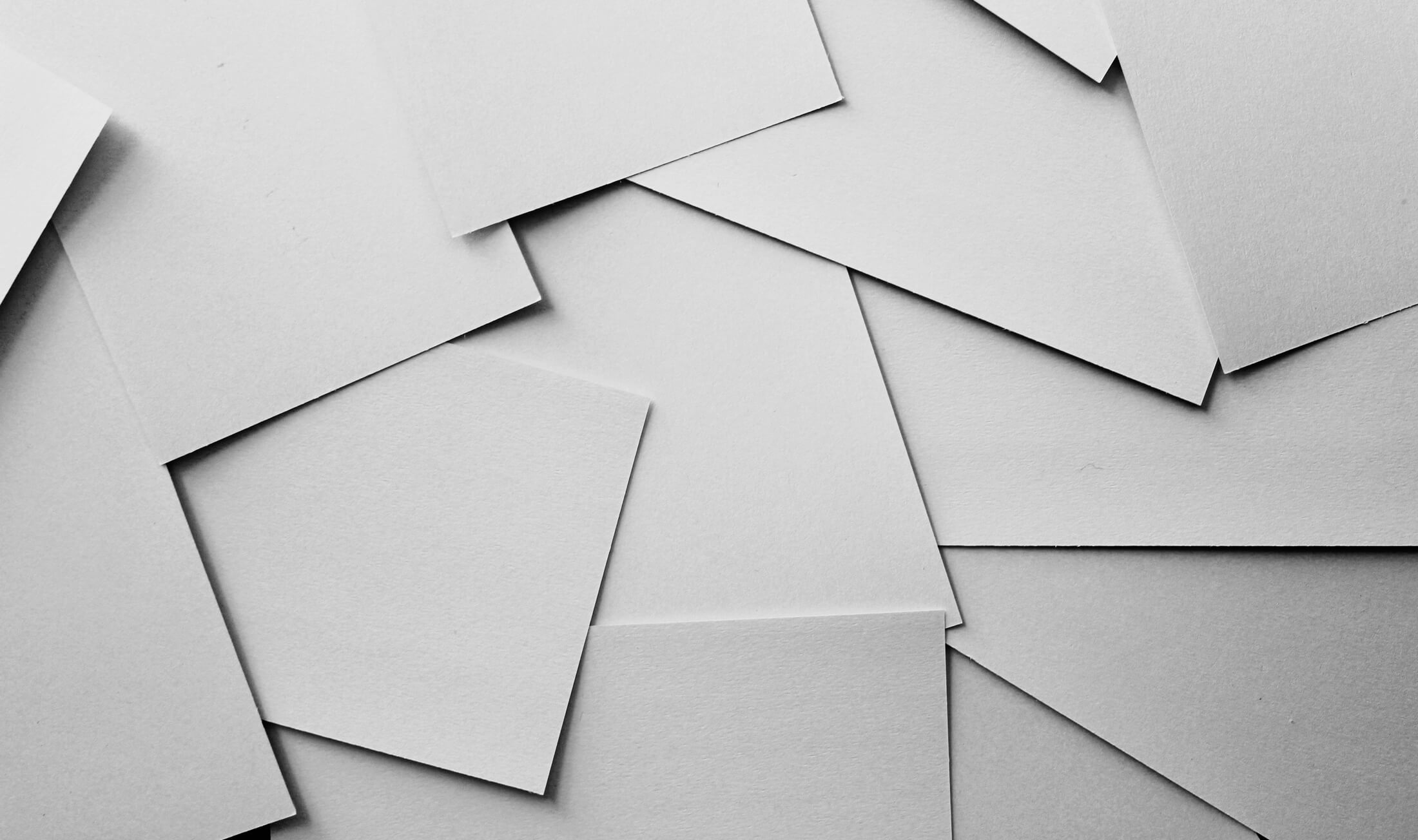There’s Nothing Negative About Negative Space
Negative space is just as much a design element as an object, graphic, or typeface. Likely, your designer has implemented it for a reason, and filling that space with a graphic element could impede the goal of the design, and ultimately, the success of the marketing piece in question.
What Negative Space Is:
Negative or White space in any design is essential, as it is what allows breathing room to exist between design elements. Too little and your composition looks crowded. Too much and it looks empty. Without it, design elements clump together, and your composition would end up looking like a blob (yes, this is very technical design language).
Proper negative space can define elements, break a composition down into sections, and make it easier for the audience to digest information, rather than having to process the whole design at once. In other words, it subtly tells a viewer exactly how to intake the information in front of them.
What Negative Space Is Not:
White space is a misnomer, as negative space could just as easily be black, blue, or any other color under the sun. Negative space is also not simply just empty space.
It is not less important because there is nothing there. Similarly, it is not important to fill a canvas just because there is space left. That space can be used to highlight or emphasize the important parts of a piece, create hierarchy, and communicate more effectively than by just making sure that every corner is filled.
It’s not about filling space; it’s about using space. And sometimes that means using it as negative space.
Negative Space In Typography:
Negative space in typography can take many forms, and proper use of this space can make text more legible, give it personality, and even group ideas together or distance them completely.
Here’s a little vocab lesson featuring my friends: Leading, Tracking, and Counter Forms.
Leading = the space above and below lines of text.
Tracking = the space between letters in a word.
Counter Forms = the space within a letter (think about the hole in the middle of an “O”).

Designers manipulate all of these areas of space to convey meaning. Want a word to appear more friendly? Use a typeface with wide and open counter forms. Need a word to look more sophisticated? Track it out. Want your audience to be able to skim quickly with ease? Increase your leading. Negative space assists a design more than you’re aware of when you look at it.
Negative Space In Web Design:
We typically don’t see clients fighting against negative space in type because it is clear how it impacts the legibility of the user. However, we are constantly fighting the idea in web design that more is more.
The problem with crowding layouts in web design is that it inhibits the user experience. A client might want to say too much too fast, or communicate too many ideas at once, without considering the user’s curated journey through the website.
The truth is that negative space keeps the viewer’s eyes focused on the subject. Negative space should be used to balance or align objects in a design to guide the users. A user can only digest a limited amount of content (written & visual) in a moment, and negative space between subjects helps to pace out the information and create maximum impact.
Positive ways to frame negative space in web design:
- Negative Space creates a break in the page: This encourages users to scroll and learn more.
- Negative Space highlights the desired message: This allows users to identify with the subject and develop an emotional association with the communicated message.
- Negative Space directs the flow of the page: This directs your view to search below the fold and subtly redirect the users’ attention down the page.
- Negative Space makes certain elements pop: This creates emphasis on objects you want to highlight by surrounding them in negative space.
You can see how negative space is vital to every aspect of design. It can make all the difference in what a viewer focuses on, and therefore what they take away from it.
By creatively leveraging negative space, you can encourage users to remember the design’s intended message and make communication more effective. The next time you look at a website or paragraph, consider what the negative space is doing to help you better digest the information presented.
